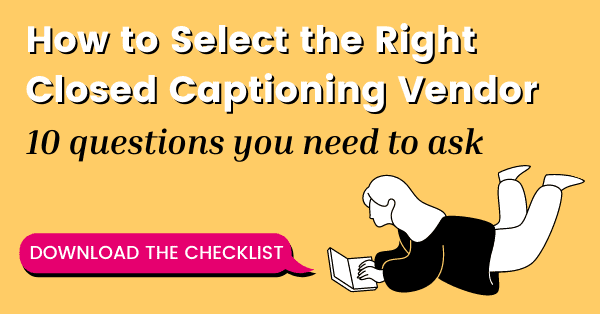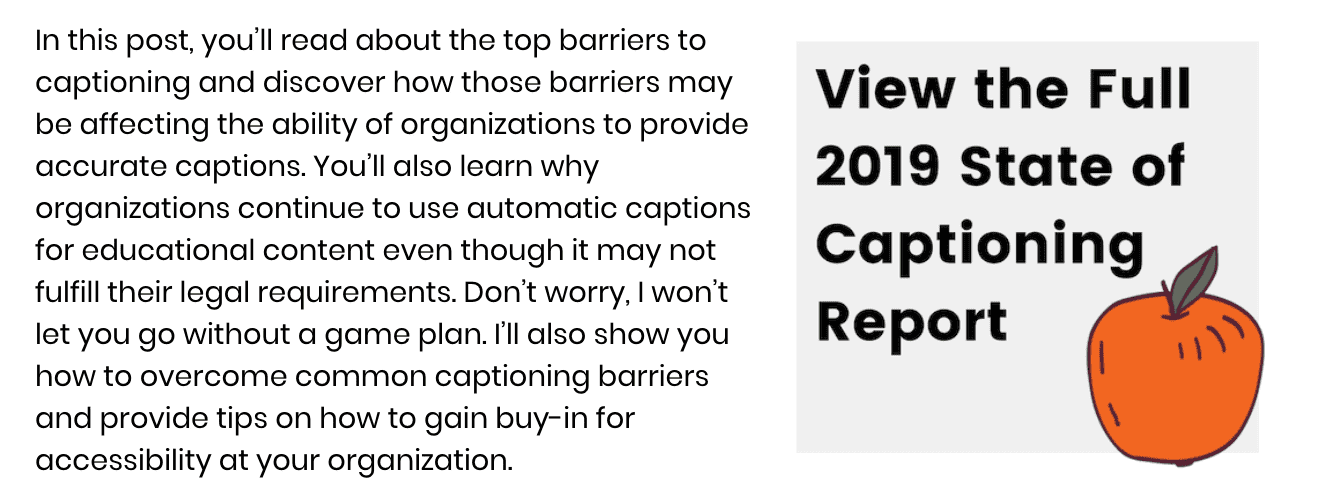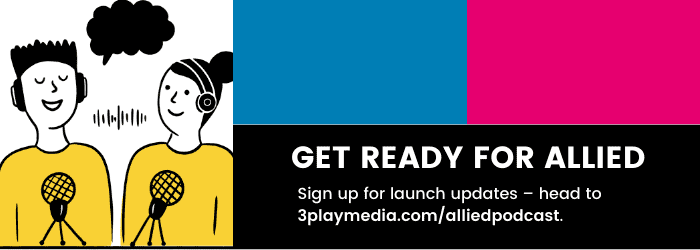Blog
Call To Action (CTA)
Call to Action, or CTAs, are part of a piece of content that encourage the reader to take an action.
CTA's, in general, should be value-driving, actionable, and eye catching.
Best Practices
🗺️ Location
Bottom of Page CTAs: All blogs should include a CTA at the bottom. Blog CTAs should be relevant to the purpose of the blog.
Inline CTAs: Include CTAs within the blog posts to relevant white papers or other pieces of content. These CTAs can blend into the content, like a link or own line.
📷 CTA Images
Most CTAs at 3Play have three parts:
Headline: should use actionable, value-driving words.
"Free Checklist: Your Go-to Guide for Creating Accessible Video" versus "Accessible Video Ebook"
Sub-header: If you include a sub-header, it should clearly state the benefits of the CTA
For the headline: "Free Checklist: Your Go-To Guide for Creating Accessible Video," the sub-header could say, "Learn how to create accessible, engaging, and compliant video."
Image: Images should be relevant and eye-catching
Alt text: Make sure to include alt text and check the colour contrast.
Naming Convention: When uploading CTAs into Wordpress, make sure to include CTA within the the image name. (ex: translationpricing-cta.png)
Accessibility
It's important to provide alt text when using an image CTA so screen readers can tell the user the purpose of the image.
As a best practice for accessibility, you don't want to include a lot of information inside the image. Most screen readers will only read 150 characters of alt text.
Feature Image
Feature images should be eye catching and relevant to the blog. Feature images can be a powerful tool to get people to click on the blog.
Best Practices
Featured images should be illustrated, not stock photos.
Size: 1400 x 550 pixels
Naming convention: blog-header-mm-dd-yyyy-blogkeyword.jpeg
Accessibility
Since featured images are meant to be decorative, you should label them as "null" in the alt text.
Links
According to The Beginner’s Guide to SEO by MOZ, “Links act as the streets between web pages.”
Including links in blog posts help prove your point, drive traffic to older posts, help keywords rank higher, and help direct Google spiders through your website.
Best Practices for SEO
- Include relevant and important links above the fold
- Try to stick to 3-5 inbound and outbound links per 1000 words
- Links should focus on one specific call to action and link back to the core of the blog post
- If you are linking to gated content, be upfront about that
- You can link to external websites, but be judicious - link expert quotes or studies, but not vocabulary words you could easily define
💡Quick Tip: Read the words you intend to link and ask yourself, "Do they make sense out of context?" If the answer is no, link to a phrase or word that makes better sense.
Best Practices for Accessibility
Keyboard A11y: Users should be able to navigate links through a keyboard using the tab key to jump from link to link, and enter key to select a link
Descriptive Links: Links should be descriptive; they should make sense out of context
- Most screen readers will say "link" before each link. So if you are linking to our solutions it would say "link solutions"
-
You do not need to say "link" in the link description or in an image that links to something
- 👎 "click here," "more," "click for details"
- 👍 "WCAG guidelines," "products," "3Play Plugin"
💡Quick Tip: Some screen readers have a feature that alphabetically-organizes a list of links. Make sure your links can be intuitively organized.
"Contact Us" is better than "How to Contact Us" because it gets to the point quicker




